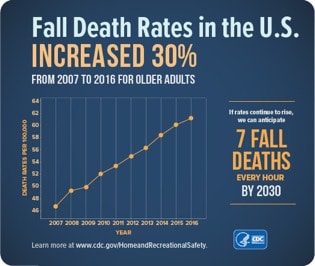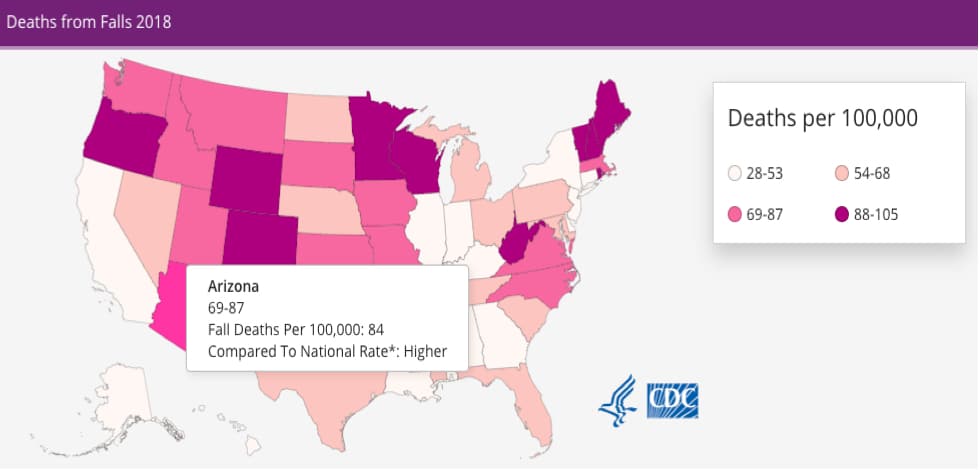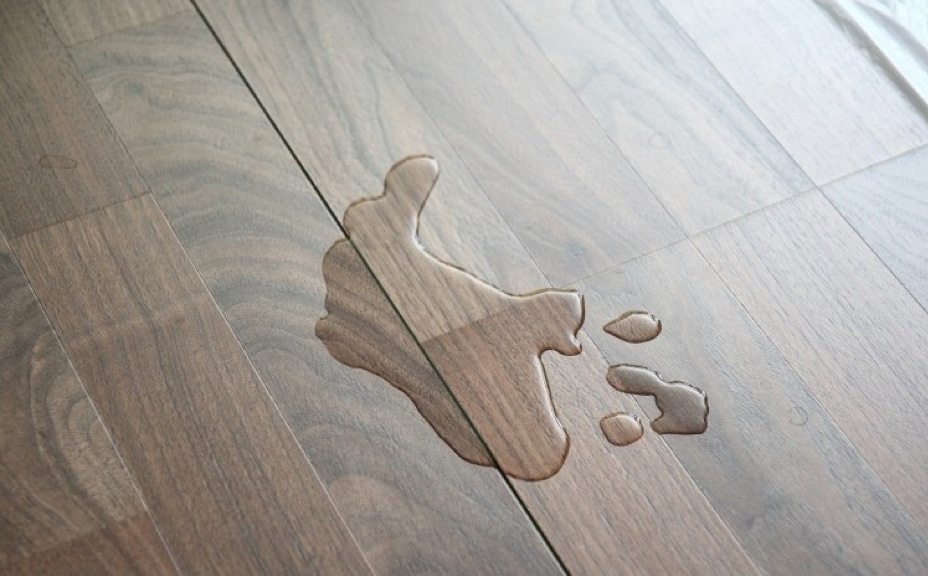No Fee Unless You Win
No Fee Unless You Win
A premises liability lawyer understands the challenges you face after being injured on someone else’s property. You are injured, in pain, have mounting medical bills, and are concerned about when your life will get back to normal. That is why it makes sense to contact a premises liability lawyer after you’ve been injured.
Property owners are required to maintain a relatively safe environment so that people who lawfully come onto the property are not injured. The property can be owned by a person, a company, or the government. Premises liability arises when the property owner fails to maintain a safe environment.
Common types of premises liability cases involve:
Premises liability claims cover bodily injury, personal injury, and property damage suffered.
Personal Injury & Accident Lawyers in Arizona
Speak to one of our personal injury attorneys and learn more about the legal options for your accident claim.
First: The premises owner must be negligent. Legally defined, “negligence” means that the property owner has failed “…to behave with the level of care that someone of ordinary prudence (reasonable person) would have exercised under the same circumstances.” Simply put, the property owner did, “…not behave at least as a reasonable person would”.
What does that mean? It is complicated.
In driving, there are laws designed to protect everyone. After a car crash, police officers investigate the crash to determine if someone involved violated any of those laws. Generally, this helps determine who was wrong and caused the crash.
In premises liability, few laws apply, and, generally, these events are not investigated by the police. Instead, as the victim, you have the “Burden of Proof.” You must prove the property owner failed to exercise reasonable care to prevent injuries. You might prove the property owner knew of a dangerous condition and failed to act as a reasonable person (to either warn or correct the dangerous condition), or you might prove the property owner was neglectful. Either way, because there is no police investigation, you will need to prove liability with evidence such as pictures, witnesses, or video.
Second: Along with negligence, to pursue a premises liability claim you also need damages. Damages are “…losses suffered by the injured party” including medical expenses to treat the injuries, pain, suffering, disfigurement, and lost wages. The damages must be caused by the injurious event to be included in your claim. Without injuries, or damages, a premises liability claim with fail.
If you or a loved one has sustained injuries on another’s property, contact our Phoenix premises liability lawyer to see how we can help you. It is vital to hire a premises liability lawyer experienced in navigating the complexities of premises liability cases. These can be complicated cases with multiple pitfalls, which is why they are typically the least successful cases. Having the right attorney on your side can make the difference.
Falls are a threat to the health of older adults and can reduce their ability to remain independent. It is a surprising fact that falls account for 37% of nonfatal injuries sustained in 2020, making it the number one cause of preventable injuries and third in preventable deaths—after poisoning and motor vehicle accidents. With over 14 million falls every year, it’s no surprise that a large portion of personal injury claims are from a slip and fall accident involving adults ages 65 and older.
preventable injuries united states comparissonSlip and fall cases mostly occur in commercial facilities like restaurants or grocery stores, but can also occur at someone’s home or on private property. Unattended spills, uneven or loose flooring, damaged cement, and folded-over entrance mats are some of the most common causes of falls. From our experience, even grapes on the floor have been regularly seen to cause a person to slip and fall.
In Arizona, 27.3% of all falls occur in adults ages 65 and older. In 2021, 1,005 adults ages 65 and older died from a fall. A slip and fall lawyer knows all falls cannot be prevented, but that doesn’t mean we shouldn’t try.
Yes. In Arizona, you have the right to sue for your injuries and damages if you’ve slipped and fallen because the property owner or occupant was negligent.
As the victim of a fall, you must show that the property owner, or person responsible for the property, knew of a dangerous condition and failed to either warn or correct it. The fact that you fell is not enough. You need to show someone else owed you a duty of care and violated that duty. You must then establish their violation of the duty of care is what caused you to fall.
You have the burden of proof. To satisfy this burden, you must present evidence that supports your claim. You cannot rely on arguments and innuendos.
It is normal to feel embarrassed after a fall. Your natural intuition is to stand up and deflect some of the attention away from you. You might even feel compelled to leave the property without speaking to someone. This makes it difficult to prove that the incident even occurred. An unfortunate common belief is that when something occurs on another’s property, you have a “Clear cut” or a “Slam dunk” case. You need evidence if you want to hold the property owner accountable.
Anything that you can obtain that supports the details of your injury needs to be preserved for your benefit. Evidence can include a report made on scene, so do not leave the property without first speaking with someone in charge. Make sure you obtain a copy of any records, like an incident report, to verify where, when, and how the fall occurred.
Witnesses are especially helpful. Many times, they can help identify what was happening at the time of the fall, what caused the fall, and what happened afterward. Photos are also important because they can show where the fall occurred and identify the condition that led to your fall. Video is even more convincing, particularly if you can record witnesses’ statements while the events are still fresh in their minds. You should ask to see any surveillance video and request a copy; however, nearly all property owners will reject your requests since there is no obligation to share the video without a court order. If they are willing to show you the video, you can record the screen with your cell phone’s camera.
Medical records also serve as evidence of your pain and suffering, which strengthens your claim. Having the ability to match your injuries with the details of your fall is powerful. If you claim that you fell and were hurt, but the doctor’s notes reflect that you sustained the injuries differently or don’t even mention the fall, no one will believe your claim. Therefore, when you visit a doctor, tell them the injuries were caused by a fall and give them details of the incident. Don’t lie to the doctor. Don’t exaggerate. Don’t underreport.
Hiring an attorney right away can help preserve any footage that might exist. An attorney can send a “Preservation of Evidence Letter,” which is “a notice sent to an opposing party that requests that all relevant evidence is preserved.” Failure to preserve such evidence could result in an “adverse inference” if the case goes to court; that is, the judge would instruct the jury that it can presume the destroyed evidence would have been adverse to the property owner.
It is important to remember that when you are dealing with an insurance company, you are dealing with a “For-Profit” company. They are in the business of being profitable. They are not in the business of giving money away or being generous to injury victims. They will do everything they can to ensure that they stay profitable. Insurance adjusters and the attorneys they hire oftentimes are incentivized to aggressively challenge and diminish the value of a claim. The annual medical costs from slip and fall injuries are as high as $34 billion. Insurance companies do not want to cover those costs and will look for any glimmer of hope to deny the claim.
Regardless of the reason a person falls, your premises liability lawyer must keep several important elements in mind: negligence, injuries, and a collectible source of money.
The first thing to do after falling is assess your situation. Are you in a safe place? How badly injured are you? If you can move to a safe place or are already in one, call for help. Whether it’s the property owner, a manager, an employee, or 911, make sure you immediately let someone know what happened.
The presumption is the fall caused physical injuries (e.g., broken bones, dislocated joints, concussion or brain injury, cuts, and scars, etc.). Injuries that you sustained in a fall should require medical treatment. Without medical treatment, it is very difficult to prove you were injured and it is very difficult to prove the fall caused other elements of damages (e.g., pain, suffering, wage loss, etc.).
A key part of proving your damages is the medical treatment you receive. Treatment has to be received within a reasonable amount of time. Waiting more than a few days to a week to get medical treatment allows the insurance company to question whether the proposed injuries were caused by the fall. Medical records, and related bills, provide a basis for an insurance adjuster or a jury to understand what happened to you.
If the burden of proof is met, and there are sufficient injuries and damages, the next thing you will need is a source of recovery. Sources of recovery are usually liability insurance policies (e.g., business liability insurance, homeowners’ insurance, etc.). Yes, you will sue the property owner or operator, but any payments will come from their insurance company. If there is no insurance coverage, then you must hope the property owner has sufficient assets to pay personally. This is known as “self-insured.” Without insurance coverage or sufficient assets to cover your damages, there is no source of funds to pay a settlement or jury verdict.
People over the age of 65 are most at risk for falls. A study done from 2007 to 2016 showed a 30% increase in slip and fall fatalities. In 2007, there was an average of 47 fall deaths per 100,000 in the US. This increased to 61 fall deaths per 100,000 in 2016. Two years later, in 2018, Arizona had 84 fall deaths per 100,000.


It is important to keep in mind that, although the elderly are the most susceptible to falls, as personal injury attorneys we have represented small children and many middle-aged people after being injured in a fall.
Arguably, 100% of accidental falls are avoidable. From our experience, someone somewhere failed to take appropriate steps to avoid an injury from occurring. Even though the situation that leads to a fall may not be within your control, there are many things you can do to minimize the risk of a fall.
The main thing you can do to reduce your risk of a fall is to be aware of your surroundings. This is commonly known as “situational awareness.” We tend to underappreciate situational awareness when in familiar surroundings. For instance, have you ever mastered moving quickly around pieces of furniture in a room, or even in the dark, then one day you find yourself hitting the corner of a table or chair? Maybe the room was cleaned, and the furniture moved ever so slightly. Though broadly in the same room, those small changes without your knowledge became a potential hazard. The same can happen when you go to familiar places. You walk in instinctively and navigate as you always have without taking notice of slight changes that may have occurred since your last visit. There could be a rolled-up mat or liquid on the floor. In other words, the environment you were familiar with is no longer the same as you remember.
Additionally, there are an inordinate number of things fighting for your attention. Just one distraction can cause you to miss even large dangers, particularly when entering a place familiar to you. We tend to relax in familiar environments, letting down our guard and allowing us to focus our attention on non-safety-related issues.
When in unfamiliar environments, you might be preoccupied with finding a bathroom or employee. You have a specific purpose at the forefront of your mind. This occupies most of your attention, which can lead to visual and cognitive tunnel vision. In such a state, you are at a significant risk of injury. A great example of this is “The Invisible Gorilla” experiment:
This experiment revealed that when we are actively focused on a task we are missing a lot of what goes on around us.
Insurance companies have attorneys who make a career of discrediting claims. They use tools like the NICB and fears of fraud to take advantage of injury victims. Therefore, it is essential to involve experienced attorneys as soon as possible. Gage Mathers has decades of experience with premise liability claims. Having the right team on your side will help prevent insurance companies from taking advantage of you and maximize your chances of receiving the compensation you deserve.
One of the reasons that fall cases are so difficult to pursue is that, historically, they are targets for fraudulent claims. A simple search of “Slip and Fall Scams” on YouTube turns up numerous videos of people staging falls.
Slip and Fall Fraud Caught on Camera
Due to high levels of insurance fraud, insurance companies are highly suspicious of slip and fall claims. There are groups like the National Insurance Crime Bureau (NICB) that specialize in investigating claims of fraud for companies that suspect foul play. Their investigations can lead to criminal charges. This historical perspective is one reason slip and fall cases are difficult to pursue. You are more likely to need to file a lawsuit in a slip and fall case than a car crash case to obtain compensation for your injuries. This also is one reason slip and fall cases are largely unsuccessful. Another reason, maybe the largest reason, follows.
Here is a photo of the remnants from a slip and fall.

As you look at the picture, ask yourself a simple question, “What do I see?”
If your answer was, “a slip hazard” or “evidence of negligence,” then you are thinking like a fall victim. Everyone who sees that photo will see “water on the floor.” Every defense lawyer and most jurors will usually add, “How did you miss it?” or “It’s so obvious.” Even worse, after seeing this photo, many jurors will say “I would have seen that. I wouldn’t have fallen.”
The insurance company’s lawyer will blow the photo up so the puddle looks like a lake. They will argue that, even though the property owner might have been negligent, you as a reasonable person should have been paying attention and avoided such a potential danger. That argument might sound exaggerated or unreasonable, but from our experience, you can count on the insurance company taking this position.
Frankly, it is not an unreasonable argument. You do indeed have to maintain proper awareness of your surroundings. You must indeed act as a reasonable person, who is usually taught at a young age, “Look before you leap.” However, that does not excuse a property owner from liability either.
It is important to make note of any warning signs that may be present. Wet floor signs, yellow tape, or orange paint are usually used to highlight a potentially dangerous condition. These precautions are taken so that the insurance company can argue that their client took proper measures to mitigate any dangers. If you notice any of these warning signs, it is best to avoid the area altogether. If you continue and suffer a fall, it is presumed that you assumed the risk related to the danger. This, in turn, supports the defense that the property owner is not liable. Though this alone is not enough to dismiss a claim, you do not want to give the other side any ammunition to shoot down your case. You do not want to feed into the fear of insurance fraud.
If you or a loved one has been seriously injured, please fill out the form below for your free consultation or call us at (602) 258-0646
2525 E Arizona Biltmore Cir #A114, Phoenix, AZ 85016
get directions